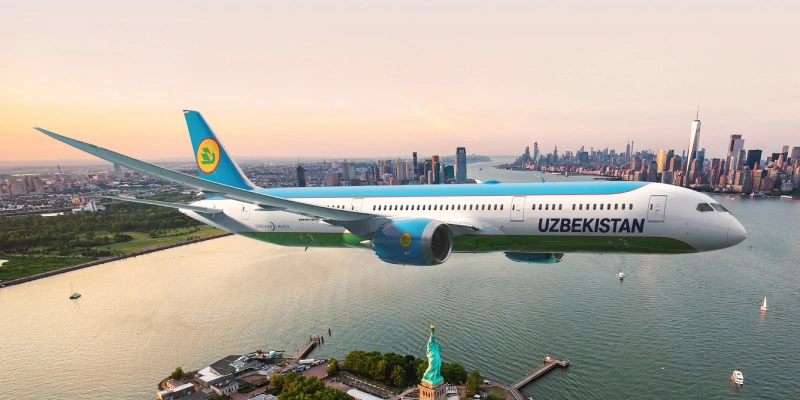Uzbekistan Airways has signed the largest order in its history: the acquisition of 14 Boeing 787-9 Dreamliners with an option for eight additional aircraft, bringing the potential total to 22 units. This operation will allow the airline to modernize its wide-body fleet.
The announcement was made during the United Nations General Assembly, with the presence of the President of Uzbekistan, Shavkat Mirziyoyev, alongside Boeing executives and representatives of the airline. Simultaneously, Boeing and the Uzbek Ministry of Transport signed a Memorandum of Cooperation to explore new growth opportunities within the country’s aviation ecosystem.
A Strategic Bet on Global Connectivity
The airline’s President, Shukhrat Khudaikulov, emphasized that the Dreamliner family has been the “cornerstone” of its long-haul operations. With this agreement, the company strengthens its role as an air hub in Central Asia and enhances the international connectivity for its passengers.
→ WestJet Announces Largest Order in Its History: 67 Boeing Aircraft
The introduction of the higher-capacity and longer-range 787-9 will enable the opening of new routes to the United States and other intercontinental destinations, at a time when demand for international travel continues to rise.
From Pioneers to Leaders in Central Asia
Uzbekistan Airways was the first airline in Central Asia to operate the Dreamliner. Its current fleet of 787-8 already connects cities in Europe, Asia, and the United States, including a direct flight to New York. The arrival of the 787-9 variant will further expand this network.
Boeing’s Senior Vice President of Sales and Marketing, Brad McMullen, highlighted the nearly 30-year relationship with the Uzbek airline and stated that the 787 model will support its expansion into new markets.
The Dreamliner is notable for its fuel efficiency, versatility, and passenger comfort. Thanks to its advanced aerodynamics, use of composite materials, and innovative systems, it achieves up to a 25% reduction in fuel consumption compared to the aircraft it replaces.
Related Topics
Philippine Airlines Receives Its First Airbus A350-1000
American Airlines Debuts Airbus A321XLR on Transcontinental Route Between New York and Los Angeles
Uzbekistan’s Qanot Sharq Receives Its First Airbus A321XLR
China Airlines Orders Five Additional Airbus A350-1000 Jets
Un apasionado por la aviación, Fundador y CEO de Aviación al Día.
